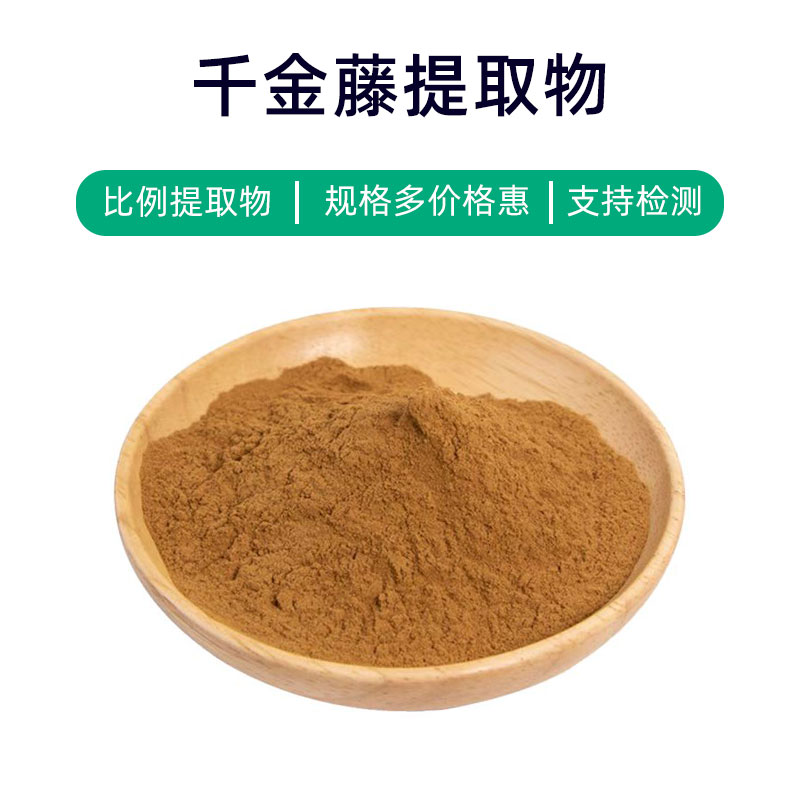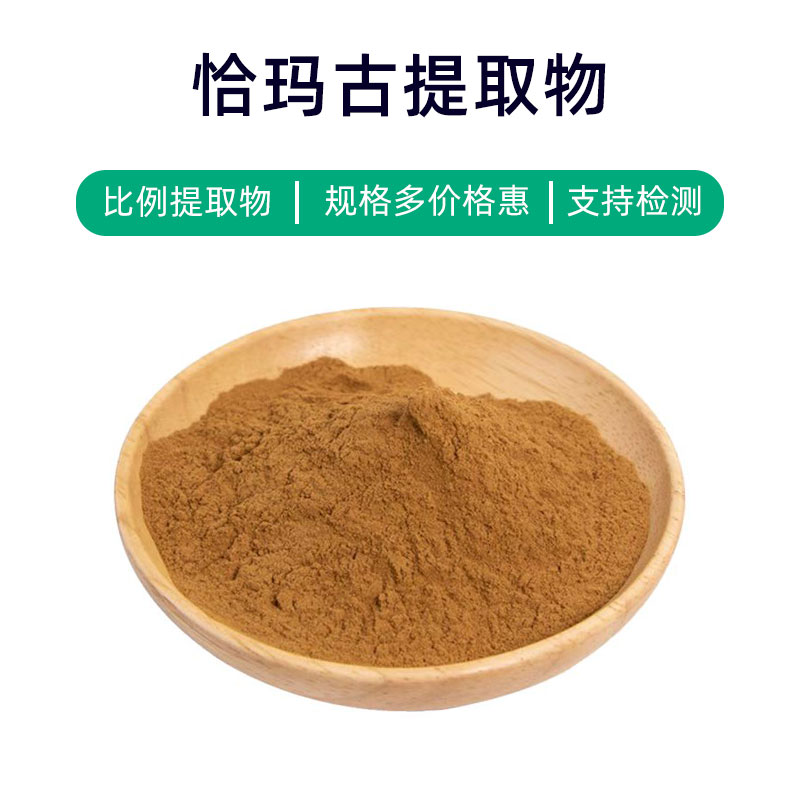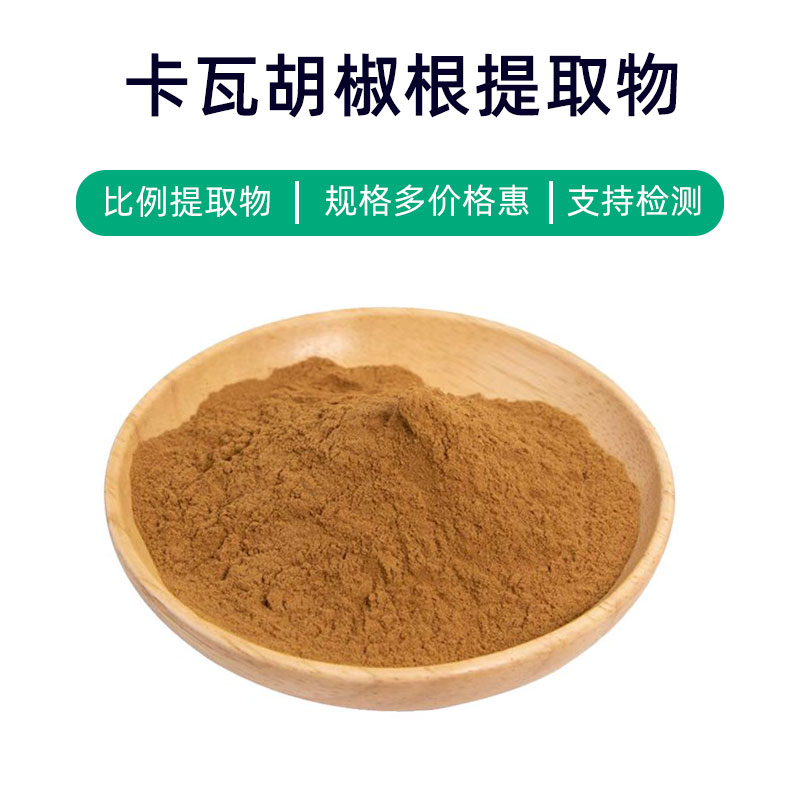Chinaroot Greenbrier Rhizome Extract Product Introduction
Chinaroot Greenbrier Rhizome Extract is a natural plant extract derived from the root and stem parts of the Chinaroot Greenbrier Rhizome plant, containing main components such as Chinaroot Greenbrier Rhizome saponins, fatty acids, and polysaccharides. This extract has various benefits and is extensively used in pharmaceuticals, health products, cosmetics, and other fields.
As an herbal extract, Chinaroot Greenbrier Rhizome Extract is rich in Chinaroot Greenbrier Rhizome saponins, known for its antioxidant, anti-inflammatory, and antibacterial properties. It also contains nutrients like fatty acids and polysaccharides, providing nourishing and moisturizing effects for the skin, commonly used in skincare products to improve skin texture and enhance moisture retention.
In traditional medicine, Chinaroot Greenbrier Rhizome Extract is often utilized for its believed effects in clearing heat, detoxifying, promoting blood circulation, and resolving stasis. It is commonly used to treat conditions like rheumatic pain and blood stasis. Additionally, Chinaroot Greenbrier Rhizome Extract is used in health products to enhance blood circulation, boost immunity, and regulate hormone levels.
In conclusion, Chinaroot Greenbrier Rhizome Extract, as a natural plant extract, offers various benefits and finds extensive applications in pharmaceuticals, health products, and cosmetics.
Chinaroot Greenbrier Rhizome Extract Production Process
The production process of Chinaroot Greenbrier Rhizome Extract typically involves the following key steps:
- Raw Material Preparation: Select fresh Chinaroot Greenbrier Rhizome plant root and stem as extraction materials to ensure quality and purity.
- Cleaning and Processing: Clean and process the Chinaroot Greenbrier Rhizome plant to remove impurities and surface contaminants for purity.
- Grinding and Crushing: Grind and crush the cleaned Chinaroot Greenbrier Rhizome plant to facilitate the extraction of target components.
- Extraction Process: Employ suitable extraction methods such as water extraction, alcohol extraction, or supercritical fluid extraction to extract active components from the plant.
- Concentration and Drying: Concentrate the extracted solution to remove solvents, then transform it into a powdered form through methods like spray drying or vacuum drying.
- Quality Control: Conduct quality testing and analysis on the extract to ensure compliance with relevant standards, including component content, purity, and microbial testing.
- Packaging and Storage: Package the extract in sealed containers to prevent oxidation and contamination, store in a dry, cool, and dark environment to avoid moisture.
- Final Inspection and Packaging: Thoroughly inspect the final product to ensure quality standards are met, then proceed with packaging and labeling for distribution.
Following these production steps ensures the production of high-quality Chinaroot Greenbrier Rhizome Extract for use in pharmaceuticals, health products, cosmetics, and other industries.
Chinaroot Greenbrier Rhizome Extract Efficacy and Side Effects
Chinaroot Greenbrier Rhizome Extract, a commonly used herbal plant extract, offers various effects and benefits, including:
- Anti-inflammatory Effect: Rich in bioactive components, Chinaroot Greenbrier Rhizome Extract demonstrates notable anti-inflammatory properties, effectively suppressing inflammatory reactions to alleviate pain and discomfort.
- Antioxidant Effect: Polyphenolic compounds in Chinaroot Greenbrier Rhizome Extract exhibit strong antioxidant capabilities, scavenging free radicals to delay cell aging and protect the body from oxidative stress.
- Liver Protection: Studies suggest that Chinaroot Greenbrier Rhizome Extract has hepatoprotective effects, improving liver function and reducing liver damage, providing therapeutic and supportive effects for liver conditions.
- Blood Glucose Regulation: Active components in Chinaroot Greenbrier Rhizome Extract can stimulate insulin secretion, enhance glucose utilization by tissues, and lower blood sugar levels, offering auxiliary therapeutic effects for diabetes.
- Antimicrobial Effect: Chinaroot Greenbrier Rhizome Extract displays inhibitory effects on various bacteria and fungi, suitable for treating skin infections, inflammation, and diseases, with antibacterial and anti-inflammatory benefits.
- Improving Circulation: Chinaroot Greenbrier Rhizome Extract aids in promoting blood circulation, enhancing microcirculation perfusion, relieving vascular spasms, benefiting cardiovascular function, and preventing cardiovascular diseases.
- Antiallergic Effect: With multiple bioactive components, Chinaroot Greenbrier Rhizome Extract exhibits antiallergic properties, alleviating allergic reactions, relieving allergy symptoms, and providing auxiliary therapeutic effects for allergic conditions.
Chinaroot Greenbrier Rhizome Extract, as a natural plant extract, generally possesses good safety and tolerability. However, individual differences and allergic reactions may lead to adverse effects such as skin allergies and digestive issues. Therefore, when using Chinaroot Greenbrier Rhizome Extract, adherence to medical advice, dosage guidelines, and usage methods is recommended to prevent adverse reactions.
Chinaroot Greenbrier Rhizome Extract Applications and Dosage
Chinaroot Greenbrier Rhizome Extract finds widespread applications in the medical, food, and cosmetic industries. Here are the product's application scenarios and dosage guidelines in different fields:
- Medical Field Applications:
- Treatment of Skin Inflammation: Chinaroot Greenbrier Rhizome Extract's anti-inflammatory and antibacterial properties make it suitable for treating various skin inflammations like eczema, dermatitis, and acne. Apply a suitable amount of Chinaroot Greenbrier Rhizome Extract to the affected area 2-3 times daily.
- Blood Glucose Control: Chinaroot Greenbrier Rhizome Extract's blood glucose-regulating properties can serve as an adjunctive therapy for diabetes. Daily intake of 100-200 milligrams of Chinaroot Greenbrier Rhizome Extract is generally recommended, with dosage adjustments based on individual needs.
- Liver Protection: Chinaroot Greenbrier Rhizome Extract's hepatoprotective effects make it beneficial for treating various liver conditions. Common dosages range from 100-200 milligrams daily, subject to dosage adjustments per medical advice.
- Food Industry Applications:
- Health Supplement Additive: Chinaroot Greenbrier Rhizome Extract's rich bioactive components make it suitable as a health supplement additive, offering antioxidant, anti-inflammatory, and blood sugar-regulating benefits. Daily intake recommendations typically range from 50-100 milligrams of Chinaroot Greenbrier Rhizome Extract.
- Functional Food Ingredient: Chinaroot Greenbrier Rhizome Extract can be used in producing functional foods such as oral liquids and capsules. Dosage and consumption methods should be determined based on product formulations and functional requirements.
- Cosmetics Industry Applications:
- Skincare Ingredient: Chinaroot Greenbrier Rhizome Extract's antioxidant, anti-inflammatory, and moisturizing properties make it suitable for skincare products like creams, masks, and essences. Apply a suitable amount of Chinaroot Greenbrier Rhizome Extract evenly on the skin, gently massage until absorbed.
- Hair Care Products: Chinaroot Greenbrier Rhizome Extract's nourishing effects on the scalp and hair make it suitable for hair care products like shampoos and conditioners. Apply a suitable amount of Chinaroot Greenbrier Rhizome Extract evenly on damp hair, massage the scalp, then rinse thoroughly.
Overall, Chinaroot Greenbrier Rhizome Extract's versatile applications in the medical, food, and cosmetic industries necessitate seeking advice from healthcare professionals or experts before use to avoid adverse reactions.
Chinaroot Greenbrier Rhizome Extract Plant Source Introduction, Distribution, and Growth Environment
Chinaroot Greenbrier Rhizome (scientific name: Achyranthes bidentata Blume) is a perennial herbaceous plant belonging to the Amaranthaceae family and Achyranthes genus, commonly used as a traditional Chinese medicinal herb. Here is an introduction to the Chinaroot Greenbrier Rhizome Extract plant source, its distribution, and growth environment:
- Plant Introduction:
- Chinaroot Greenbrier Rhizome is a vertically growing or creeping perennial herbaceous plant with coriaceous stems, reaching heights of about 1 meter. Its leaves are ovate or lanceolate, hairy on both sides, with relatively long petioles. Flowering occurs in summer with spike-like inflorescences, featuring small and densely packed red or purple flowers. The fruit is an elliptical nut containing seeds.
- Distribution:
- Chinaroot Greenbrier Rhizome is primarily distributed across various regions in China, especially in the Yangtze River Basin, Yellow River Basin, Huai River Basin, commonly found on slopes, roadsides, field edges, and riverside wetlands. Additionally, Chinaroot Greenbrier Rhizome is also found in Japan, the Korean Peninsula, Southeast Asia, among other regions.
- Growth Environment:
- Chinaroot Greenbrier Rhizome thrives in warm and moist environments, typically growing at altitudes below 500 meters on hillsides and hilly areas, as well as low-lying plains. It exhibits strong adaptability to different soil types, capable of growing in sandy, loamy, and clay soils, with a preference for well-drained sandy loam soil.
- Growth Habits:
- Chinaroot Greenbrier Rhizome is drought-resistant, requiring ample sunlight and having a high demand for water during its growth period, though it can adapt to short-term dry conditions. It boasts robust growth and reproductive capabilities, growing rapidly and reproducing through seed propagation and rhizome reproduction.
- Cultivation and Harvesting:
- Chinaroot Greenbrier Rhizome can be propagated and cultivated through seed sowing or rhizome division. Planting or transplanting is typically done in spring or autumn, followed by timely watering and maintenance of suitable temperature and humidity conditions. During Chinaroot Greenbrier Rhizome harvesting, underground rhizomes and roots from plants aged 2-3 years are selected, processed through cleaning, drying, etc., for Chinaroot Greenbrier Rhizome Extract preparation.
Chinaroot Greenbrier Rhizome, as a Chinese medicinal herb, holds various medicinal values like promoting blood circulation, alleviating pain, diuretic properties, and reducing swelling. Its widespread use in food, health products, cosmetics, and other industries highlights its significance as an essential natural medicinal resource.
Chinaroot Greenbrier Rhizome Extract Processing and Storage
The processing of Chinaroot Greenbrier Rhizome Extract typically involves the following steps: beginning with the harvesting of fresh Chinaroot Greenbrier Rhizome plants, followed by cleaning, drying, and other preparatory work, then grinding or slicing the processed Chinaroot Greenbrier Rhizome for efficient extraction of active ingredients. Subsequently, employing appropriate extraction methods (such as water or alcohol extraction) to extract beneficial components from the plant material. Finally, through concentration, filtration, and drying processes, the Chinaroot Greenbrier Rhizome Extract is transformed into its final powdered form.
For storage and preservation, Chinaroot Greenbrier Rhizome Extract should be kept in a cool, dry, well-ventilated environment, away from direct sunlight and moisture. During storage, precautions should be taken to prevent contact with harmful gases or odors that could compromise its quality. Furthermore, the Chinaroot Greenbrier Rhizome Extract should be stored in sealed containers to prevent air, moisture, or foreign particle contamination. Proper storage practices can prolong the shelf life of Chinaroot Greenbrier Rhizome Extract and maintain the stability of its active components.
Monica Sun is a seasoned expert in the plant extraction industry with over a decade of experience in research and production. She specializes in the extraction and purification of plant active ingredients, focusing on driving innovation in natural product applications. Monica has participated in the development of multiple functional plant extracts, delivering high-value natural raw material solutions for the health food, pharmaceutical, and dietary supplement sectors.


















